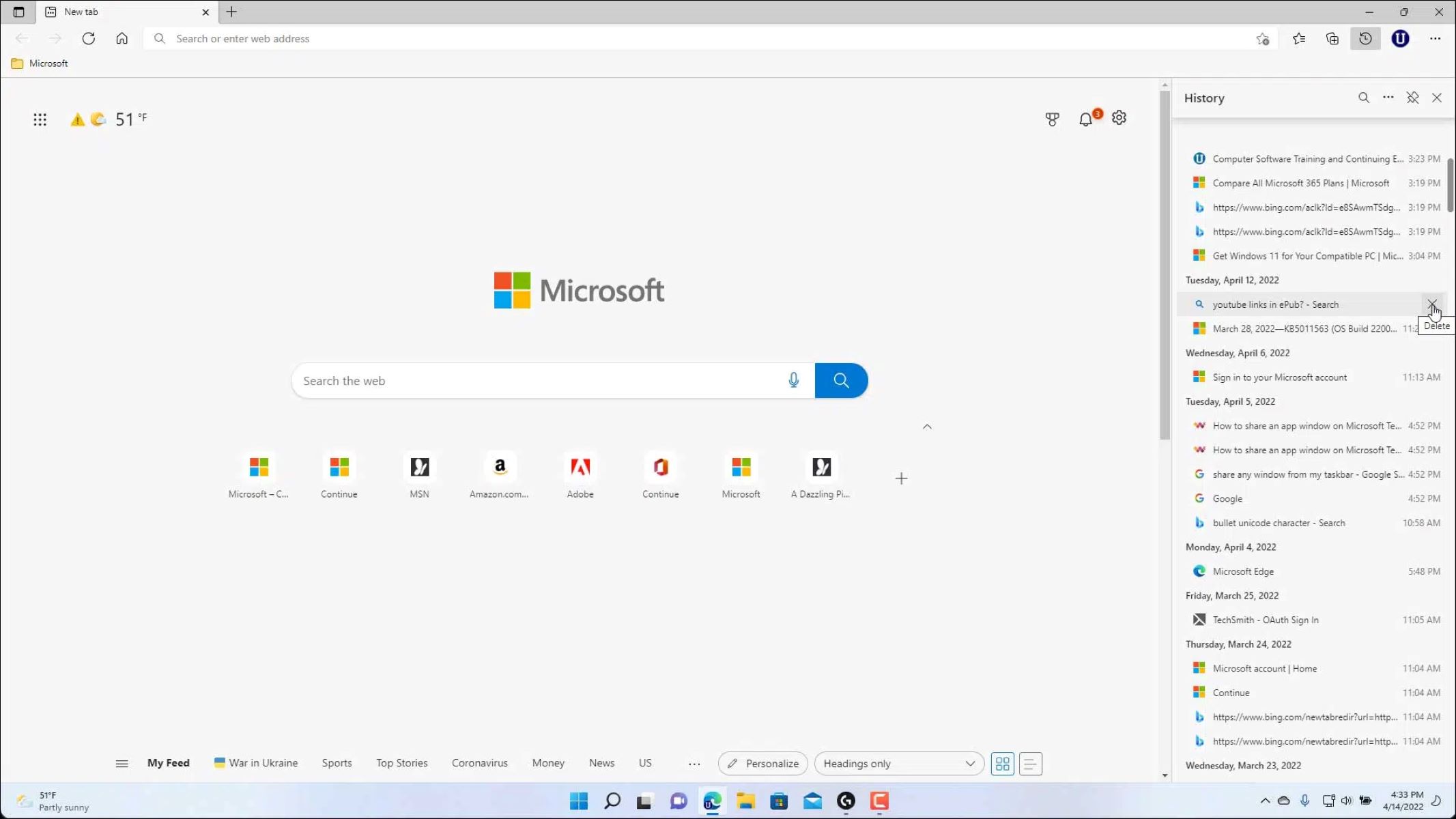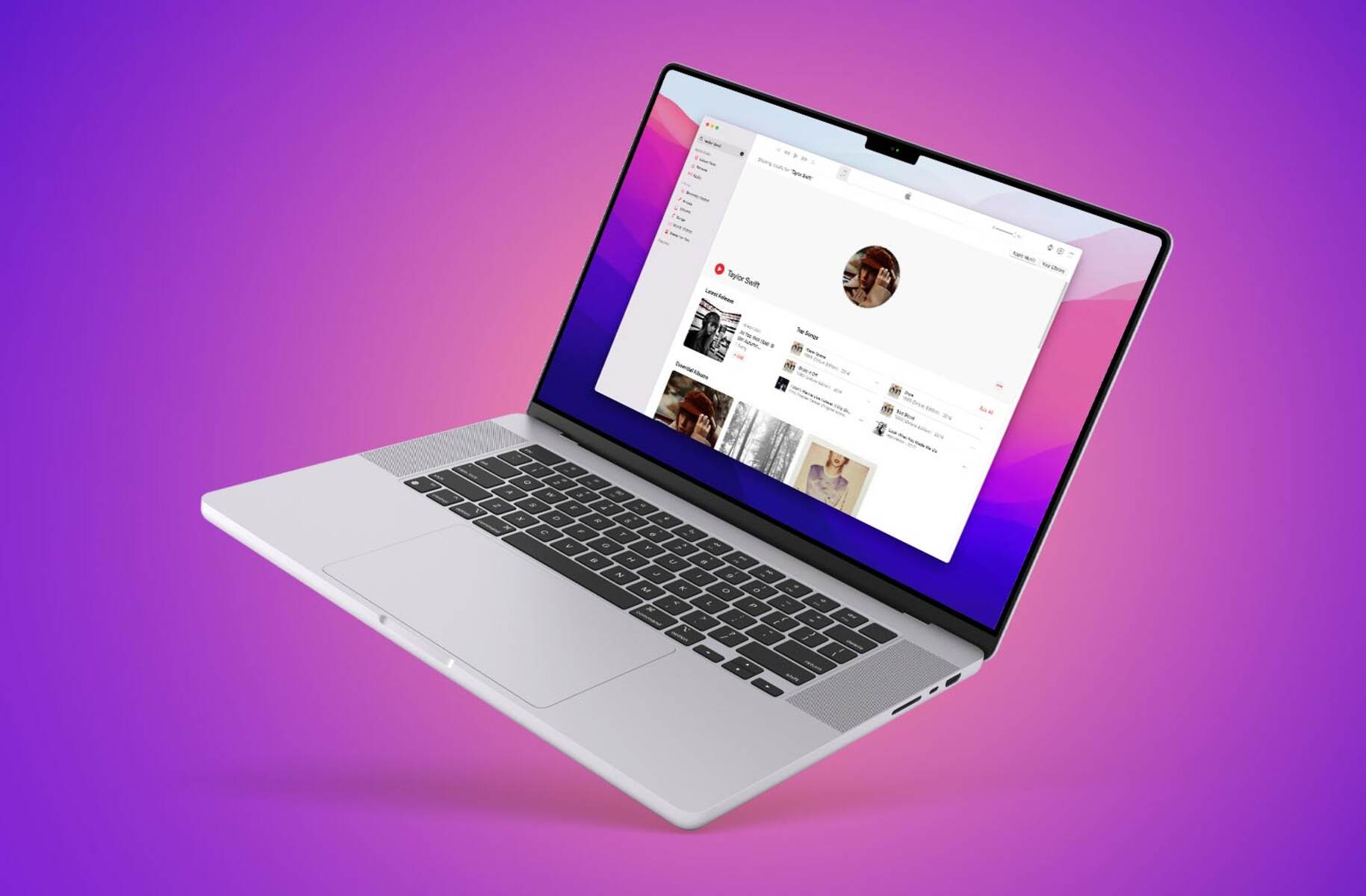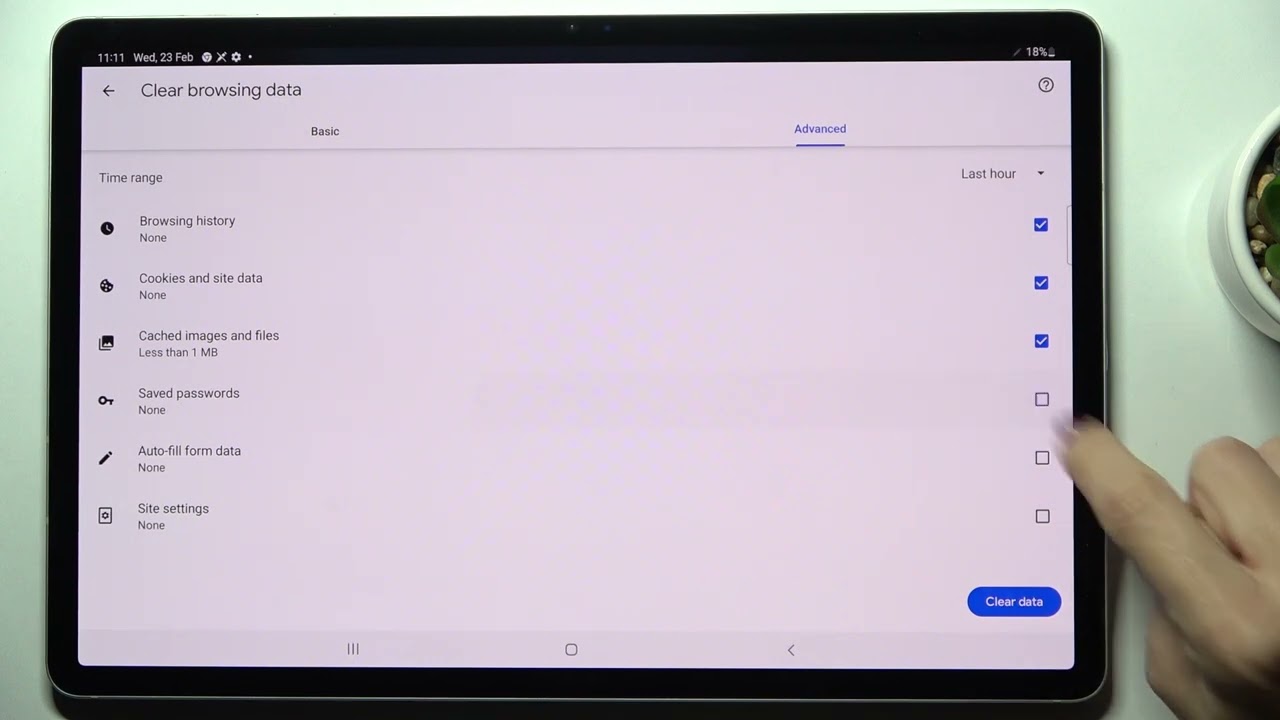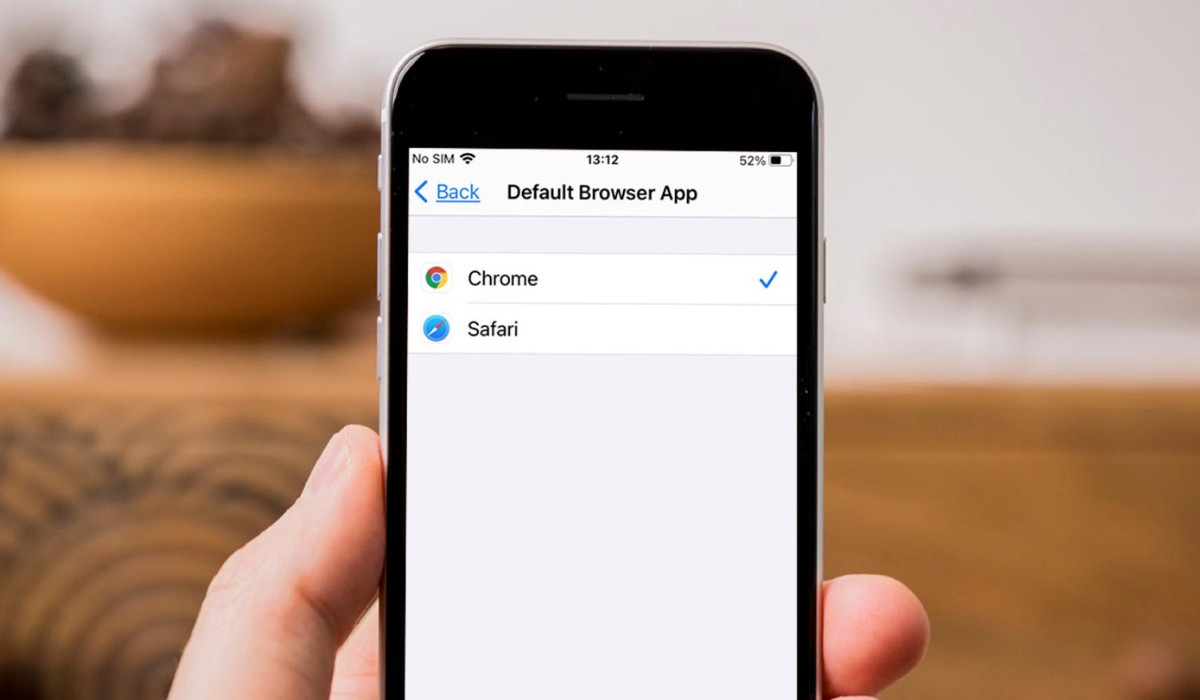Introduction
Exploring browser history can be a useful tool for various reasons. Whether you need to revisit a website you visited days ago, track your online activity, or simply recover a lost bookmark, understanding how to find browser history is essential. In this article, we will guide you through the process of locating browser history on multiple popular web browsers.
Learning how to access browser history is especially valuable when you want to retrace your steps, find important information you viewed in the past, or maintain your privacy by erasing your browsing history. Regardless of your motivation, having the knowledge to navigate through browser history can elevate your browsing experience.
In this comprehensive guide, we will cover the major web browsers like Google Chrome, Mozilla Firefox, Safari, Internet Explorer, Microsoft Edge, and Opera. We will walk you through the steps for finding your browser history on each platform, ensuring that you can retrieve the information you’re looking for with ease.
Additionally, we will provide insights on clearing your browser history. This will allow you to maintain your privacy and free up space on your device. Whether you want to delete specific websites from your browsing history or erase your entire history, we will give you the necessary instructions to accomplish your goal.
Remember, each browser has different methods for locating and clearing its browsing history. By following our step-by-step instructions, you can become a master of browser history and optimize your browsing experience.
Understanding Browser History
Before diving into the specifics of finding browser history on various web browsers, it’s important to understand what browser history is and how it works.
Browser history is a record of all the websites you have visited while using a particular browser. When you browse the internet, your browser saves data about each website you visit, including the URL, site title, and the date and time of your visit. This information is stored locally on your device, allowing you to easily revisit sites you have previously accessed.
When you revisit a website, your browser uses the information in your history to load the page faster, as it can retrieve data from your local cache instead of downloading it from the internet again. This helps to improve browsing speed and efficiency.
Furthermore, browser history provides a valuable tool for tracking your online activity. It allows you to see a chronological list of the websites you have visited, making it easy to retrace your steps or find specific information you viewed in the past.
It’s worth noting that browser history is typically tied to a specific browser and device. This means that if you use multiple browsers on the same device, each browser will have its own separate browsing history. Likewise, if you access the same browser on different devices, the browsing history will be specific to each device.
In addition, most modern web browsers offer features such as incognito or private browsing mode. When you use this mode, your browser does not save your browsing history, cookies, or any other local data, providing you with enhanced privacy during your online sessions. However, it’s important to keep in mind that private browsing does not guarantee absolute privacy, as your internet service provider and websites you visit may still collect information about your activity.
Now that you have a solid understanding of browser history and its functionalities, let’s explore how to find browser history on some of the most popular web browsers.
Common Browsers and Their History Locations
Before we delve into the specific steps for finding browser history, let’s take a look at some of the most widely used web browsers and where their history is typically located.
1. Google Chrome: In Google Chrome, the browsing history can be found by clicking on the three vertical dots in the top-right corner of the browser window. From the dropdown menu, select “History” to access the browsing history.
2. Mozilla Firefox: To find the browsing history in Mozilla Firefox, click on the three horizontal lines in the top-right corner and select “History” from the menu that appears.
3. Safari: For Safari users, the browsing history can be accessed by clicking on the “History” tab in the top menu of the browser window.
4. Internet Explorer: In Internet Explorer, click on the gear icon in the top-right corner and select “Internet Options” from the dropdown menu. In the window that appears, go to the “General” tab and click on the “Settings” button under the “Browsing history” section.
5. Microsoft Edge: Microsoft Edge users can find their browsing history by clicking on the three horizontal dots in the top-right corner and selecting “History” from the menu.
6. Opera: To access the browsing history in Opera, click on the menu icon in the top-left corner (represented by three horizontal lines) and select “History” from the list of options.
Keep in mind that these locations may vary slightly depending on the browser version you are using. It’s always a good idea to check the browser’s official documentation for the most accurate and up-to-date instructions.
Now that you are familiar with where to find the browsing history in major web browsers, let’s proceed to the step-by-step instructions for each browser.
Finding Browser History on Google Chrome
If you use Google Chrome as your web browser, follow these steps to access your browsing history:
- Open Google Chrome on your device.
- Click on the three vertical dots in the top-right corner of the browser window to open the menu.
- From the menu, select “History.”
A new tab will open displaying your browsing history. Here, you can see a list of the websites you have visited, organized by date and time. You can scroll through the list or use the search bar at the top to find specific websites or keywords within your history.
Additionally, you can filter your browsing history by using the options on the left side of the page. You can filter by time range, top sites, or the device where the browsing history was recorded.
To revisit a website from your history, simply click on the link, and the page will load in a new tab. If you want to remove a specific website from your browsing history, hover over it and click on the “X” icon that appears on the right side.
If you want to clear your entire browsing history in Google Chrome, you can do so by clicking on the “Clear browsing data” option on the left side of the history page. This will open a settings page where you can select the data you want to clear, including browsing history, cookies, cached images and files, and more. Choose the desired options and click on the “Clear data” button to erase your browsing history.
That’s it! You now know how to find your browsing history on Google Chrome.
Finding Browser History on Mozilla Firefox
If you are using Mozilla Firefox as your web browser, follow these steps to locate your browsing history:
- Open Mozilla Firefox on your device.
- Click on the three horizontal lines in the top-right corner of the browser window to open the menu.
- From the menu, select “History.”
A new tab will open displaying your browsing history. Here, you will see a list of the websites you have visited, arranged in chronological order. You can scroll through the list or use the search bar at the top to search for specific websites or keywords within your history.
Firefox provides various options to customize your browsing history view. You can filter your history by selecting options such as “Show all history,” “View by date,” or “View by site.” These options can be accessed from the drop-down menu at the top of the history page.
If you want to revisit a website from your history, simply click on the link, and the page will open in a new tab. To delete a specific website from your browsing history, right-click on it and select “Delete” from the context menu.
If you wish to clear your entire browsing history in Mozilla Firefox, you can do so by selecting “Clear Recent History” from the “History” menu. This will open a dialog box where you can choose the time range for clearing history and the types of data you want to remove. Once you have made your selections, click on the “Clear Now” button to erase your browsing history.
That’s how you find and manage your browsing history in Mozilla Firefox.
Finding Browser History on Safari
If you’re using Safari as your web browser on macOS or iOS, follow these steps to access your browsing history:
- Open Safari on your device.
- In the top menu, click on the “History” tab.
A drop-down menu will appear showing the most recent websites you’ve visited. To view your complete browsing history, click on “Show History” at the bottom of the drop-down menu.
In the history page, you will see a list of websites you have visited, organized by date and time. You can scroll through the list to find specific websites or use the search bar at the top to search for keywords within your history.
If you want to revisit a website from your history, simply click on the link, and the page will open in a new tab.
In Safari, the browsing history is organized by date, making it easy to navigate and find specific websites visited on a particular day. You can click on the disclosure triangle next to a date to view the individual websites visited during that time period.
If you would like to clear your entire browsing history in Safari, go to the “History” tab and select “Clear History” from the dropdown menu. A dialog box will appear where you can choose the time range for clearing history. After making your selection, click on the “Clear History” button to remove your browsing history.
That’s all it takes to find and manage your browsing history in Safari.
Finding Browser History on Internet Explorer
If you are using Internet Explorer as your web browser, follow these steps to locate your browsing history:
- Open Internet Explorer on your device.
- Click on the gear icon in the top-right corner of the browser window to open the Tools menu.
- From the Tools menu, select “Internet Options.”
A new window will open. In the “General” tab, under the “Browsing history” section, click on the “Settings” button.
Another window will appear, displaying options for managing your browsing history. Here, you can view your browsing history by clicking on the “View files” button. This will open a File Explorer window with a list of temporary internet files, which represent your browsing history.
You can sort the files by name, date, size, and other attributes to find the desired websites you have visited. You can double-click on a file to open it and see the content within, which may include cached images, website files, and other data from the websites you’ve visited.
Alternatively, you can also access your browsing history through the “History” tab on the menu bar. Clicking on the “History” tab will display a list of your recently visited websites, organized by date and time. You can click on a website to revisit it or right-click on a website and select “Delete” to remove it from your browsing history.
If you wish to clear your entire browsing history in Internet Explorer, return to the “General” tab in the “Internet Options” window and click on the “Delete” button under the “Browsing history” section. A new window will appear where you can choose the types of data you want to delete, including browsing history, cookies, and temporary internet files. Select the desired options and click on the “Delete” button to erase your browsing history.
That’s how you find and manage your browsing history in Internet Explorer.
Finding Browser History on Microsoft Edge
If you are using Microsoft Edge as your web browser, follow these steps to access your browsing history:
- Open Microsoft Edge on your device.
- Click on the three horizontal dots in the top-right corner of the browser window to open the menu.
- From the menu, select “History.”
A new tab will open displaying your browsing history. Here, you will see a list of the websites you have visited, organized by date and time. You can scroll through the list or use the search bar at the top to search for specific websites or keywords within your history.
Edge provides additional options to customize your browsing history view. You can filter your history by selecting options such as “View by site,” “View by time,” or “View by type.” These options can be accessed from the drop-down menu at the top of the history page.
If you want to revisit a website from your history, simply click on the link, and the page will open in a new tab. To delete a specific website from your browsing history, right-click on it and select “Delete” from the context menu.
If you wish to clear your entire browsing history in Microsoft Edge, you can do so by selecting “Clear browsing data” from the “History” menu. This will open a settings page where you can choose the types of data you want to delete, including browsing history, cache, cookies, and more. Once you have made your selections, click on the “Clear” button to erase your browsing history.
That’s how you locate and manage your browsing history in Microsoft Edge.
Finding Browser History on Opera
If you are using Opera as your web browser, follow these steps to locate your browsing history:
- Open Opera on your device.
- Click on the menu icon in the top-left corner (represented by three horizontal lines) to open the menu.
- From the menu, hover over the “History” option, and a submenu will appear.
- Click on “History” in the submenu to access your browsing history.
A new tab will open, displaying your browsing history. Here, you will see a list of websites you have visited, arranged in chronological order. You can scroll through the list to find specific websites or use the search bar at the top to search for keywords within your history.
Opera offers additional options to filter and organize your browsing history. You can filter by time range, last visited, or most visited sites using the options on the left side of the history page. You can also switch between a list view and a grid view for a more visual representation of your history.
To revisit a website from your history, simply click on the link, and the page will open in a new tab. If you want to delete a specific website from your browsing history, right-click on it and select “Delete from history” from the context menu.
If you wish to clear your entire browsing history in Opera, you can do so by clicking on the “Clear browsing data” button at the top right corner of the history page. This will open a settings page where you can select the data you want to clear, such as browsing history, cookies, and cache. Choose the desired options and click on the “Clear data” button to erase your browsing history.
That’s how you find and manage your browsing history in Opera.
Clearing Browser History
Clearing your browser history can be beneficial for various reasons. It can help protect your privacy, free up disk space, and improve browsing performance. Here’s how you can clear your browser history in most popular web browsers:
Google Chrome: To clear browsing history in Google Chrome, click on the three vertical dots in the top-right corner, select “History,” and then click on “Clear browsing data.” Choose the time range for which you want to clear the history and select the types of data you want to remove. Finally, click on the “Clear data” button to delete your browsing history.
Mozilla Firefox: In Firefox, click on the three horizontal lines in the top-right corner, select “History,” and then click on “Clear Recent History.” Choose the time range and the types of data you want to clear, and click on the “Clear Now” button.
Safari: To clear browsing history in Safari, click on the “History” tab in the top menu and select “Clear History.” Choose the time range and click on the “Clear History” button.
Internet Explorer: In Internet Explorer, click on the gear icon in the top-right corner, select “Internet Options,” and go to the “General” tab. Under the “Browsing history” section, click on the “Delete” button. You can choose the types of data you want to remove and click on the “Delete” button to clear your browsing history.
Microsoft Edge: To clear browsing history in Microsoft Edge, click on the three horizontal dots in the top-right corner, select “History,” and then click on “Clear browsing data.” Choose the time range and the types of data you want to clear, and click on the “Clear” button.
Opera: In Opera, click on the menu icon in the top-left corner, select “History,” and then click on “Clear browsing data.” Choose the time range and the types of data you want to remove, and click on the “Clear data” button.
Remember that clearing your browsing history will remove the records of websites you have visited. This action cannot be undone, so make sure to carefully consider what data you want to delete.
It’s also worth noting that some browsers offer options to automatically clear your browsing history when you close the browser or allow you to manage your browsing data more granularly. Explore the settings of your preferred browser to customize your privacy and data management preferences.
By regularly clearing your browsing history, you can maintain your privacy, keep your device optimized, and have a fresh start for your online activities.
Final Thoughts
Understanding how to find and manage your browser history is crucial for optimizing your browsing experience. Whether you need to revisit a website, track your online activities, or ensure your privacy, knowing how to locate and clear your browsing history is essential.
In this article, we’ve covered the steps to find browser history on popular web browsers like Google Chrome, Mozilla Firefox, Safari, Internet Explorer, Microsoft Edge, and Opera. We’ve also provided instructions for clearing your browsing history to maintain your privacy and optimize your device’s performance.
Remember that each browser may have unique steps and options for accessing and managing browsing history, so it’s always a good idea to refer to the official documentation or support resources for the most accurate and up-to-date information.
Regularly clearing your browsing history can help protect your privacy by removing traces of websites you’ve visited. However, it’s important to note that clearing your history will not completely erase your online footprint, as other entities, such as your Internet service provider or the websites themselves, may still have records of your activities.
Additionally, some browsers offer features like incognito mode or private browsing, which allow you to browse the web without saving your browsing history. However, it’s essential to understand that these features do not provide complete anonymity or protection from all forms of tracking.
Lastly, when managing your browser history, always consider your own needs and preferences. Some users may prefer to keep a detailed history for ease of access, while others may choose to regularly clear their history for privacy reasons. Find the balance that suits your browsing habits and priorities.
By understanding how to find and manage your browsing history, you can navigate the web confidently, protect your privacy, and optimize your browsing experience.

























